Best and most reliable Pygobject alternatives will be described in this article. Python’s PyGObject extension module makes it simple for programmes to interact with and utilise libraries that employ the GObject type system. It puts into practise a significant portion of the GObject system, which is helpful for creating different programmes. The tool itself only uses libraries that are already in existence, such as Glib and Gtk+. PyGObject can access the GStreamer services or even the browser engine indirectly through GIO. Python code can communicate with the GNOME platform using the repository thanks to the library’s implementation of the GObject type system.
Top 15 Best PyGObject Alternatives in 2022
Top 15 Best PyGObject Alternatives are explained here.
1. PyQt
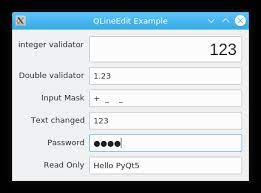
All of the platforms that Qt supports, including Windows, Mac OS X, Linux, and Solaris, are supported by PyQt, a collection of Python bindings for the Qt application framework. This programme allows for the creation of more Python applications than any other Python GUI toolkit. The most complicated and demanding Python applications may be created on PyQt, a tremendously rich platform with a sizable developer community. Also check timber alternatives
It retains its natural features and performance while being able to run across a variety of hardware and software systems with little to no change to the underlying codebase. The project’s goal is to give Python programmers the ability to quickly develop apps for the various platforms that are now accessible without having to deal with the burden of learning the various GUI toolkits that each one needs. This is another pygobject alternative.
2. MD Python Designer
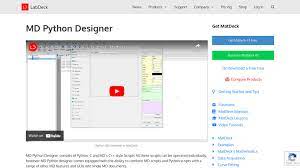
MD Python Designer is a quick prototype tool and GUI designer created in Python using the Qt Framework. Without any programming experience, non-programmers can use the application to construct complex GUIs. Users that need to use or quickly prototype a variety of GUIs but do not want to write code can use the designer. To add the graphical elements they require, such as buttons, labels, text boxes, checkboxes, and drop-down boxes, users are given a blank canvas to work with.
This is another pygobject alternative. Right-clicking on a component allows you to change its properties and drag it into any place. Editing takes place right on the canvas, including properties like location and colour. Each component includes a separate properties editor with a list of its own properties. A drop-down box can be used to edit values for properties with many options. You can use it to create data- and chart-rich dashboards for our customers.
3. Dear PyGui
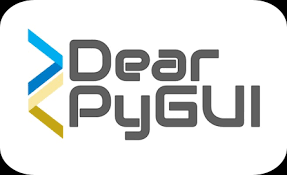
Python has a module called PyGUI that is used to build graphical user interfaces. The tool offers a straightforward and effective class hierarchy, substantially simplifying GUI programming in Python. Additionally, it offers several features not present in Tkinter, like the ability to interact with several GUI elements simultaneously and the ability to have more than one widget per window. It offers a Python object-oriented method for creating sophisticated GUIs.
You can create a custom style from scratch for each of your applications, or you can use one of PyGui’s basic styles. You already have everything you require to get started if you are familiar with HTML and CSS and have used some JavaScript, Python, and PyQt. There are numerous examples of documented modification that can help you get up and running quickly. Python is one of the most specific programming languages to start with if you are new to GUI creation, so you’re on the right track.
4. PySimpleGUI
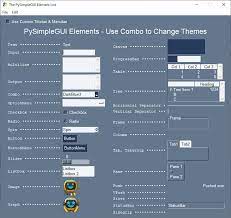
Python has a cross-platform GUI designer tool called PySimpleGUI. The tool includes a straightforward user interface for creating GUI apps, a low learning curve, and many capabilities you’d anticipate from an experienced application development platform. A Windows, Mac OS X, and Linux-compatible application can be created using PySimpleGUI with little to no source code alteration. The programme comes with numerous pre-installed layouts and features, as well as easy methods for adding your own. This is another pygobject alternative.
Because it makes use of native Unicode Windows fonts with UTF-8 compatibility, text displays properly across all platforms. Full Python source code is created, and the source window is updated with the new code each time the source code is saved. By offering a user-friendly interface for creating and manipulating GUI elements with a basic and natural syntax in your preferred text editor, PySimpleGUI improves this learning process.
5. Tkinter
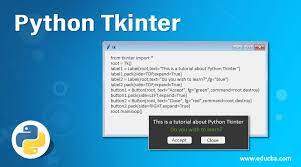
A Python wrapper for Tcl/Tk, Tkinter provides methods to build different graphical user interfaces. The Tkinter module is most frequently used to subclass the Tk class, which is made available by the module. The primary window, referred as as a canvas, is made by the Tk class and has a menu bar and title bar that are optional. By dragging any of the window’s corners or by clicking and dragging on any other area of the window frame, the user can move and resize the window.
The programmer uses one of several techniques to attach widgets to the canvas in order to add them to the window, such as buttons or labels. When a user interacts with a widget, an event handler or listener, also known as a callback handler, is triggered. Overall, Tkinter is a fantastic tool that you might take into consideration as one of its substitutes.
6. PyGTK
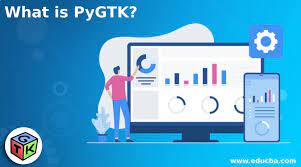
A group of Python wrappers for the GTK graphical user interface library is known as PyGTK, which is currently known as PyGObject. As long as Python and GTK+ are installed and functional, this includes Linux, Windows, macOS X, and presumably many more operating systems as well. The examples directory also has a helpful collection of sample scripts. In order to achieve a greater level of integration between the two technologies, it aims to provide a high-level, comfortable programming interface that will make it simple for GTK+ users to build Python programmes.
This is another pygobject alternative. Other enhancements include support for internationalisation using Unicode characters, programmatic support for catalogues and message catalogues, flexible input methods, and localizations. GTK+ 2.0 is also 100 percent compliant and runs on a variety of UNIX platforms.
7. BeeWare
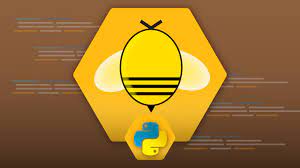
With BeeWare, Python programmers and app developers may create, test, and deploy their applications using a command-line interface, Python API, and high-level management interface. To deal with typical application chores like configuration and logging, it offers a set of fundamental services. It offers a robust set of command-line tools for managing deployments and other related operations, together with the interactive Python development environment.
It has a wide range of roles, including handling deployments to the web and other places, managing dependencies, and running test suites. Python applications can be installed on Windows, Mac, and Linux systems using the BeeWare suite. Overall, BeeWare is a fantastic tool that you may take into account as one of its substitutes.
8. GTK
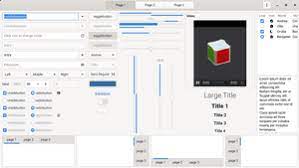
Use the open-source, cross-platform GTK toolkit to develop graphical user interfaces for applications. It heavily relies on cross-platform widgets, which may be applied to any application and used with many rendering engines. An identical button widget, for instance, can be made for Windows, OS X, and Linux. This makes it possible to provide a constant user experience across several applications. Also check Quikey alternatives
In contrast to most other toolkits, GTK is an exception in that, if it cannot locate the font you are requesting, it will automatically handle font rendering for itself. As a result, if you pick Arial as your font but your system doesn’t have Arial installed, it will use a font that looks similar. The GIMP Drawing Kit, the lowest layer used by every rendering engine to connect with the graphics hardware and drivers on each platform, is a crucial component of GTK. This is another pygobject alternative.
Applications can control the hardware on each platform via the low-level interface that GDK offers. The backend that each rendering engine provides is in charge of converting GDK callbacks into native-executable graphics calls for each platform. Overall, GTK is a fantastic tool that you can take into account as one of its substitutes.
9. wxWidgets
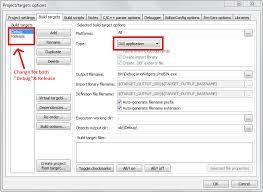
A C++ open-source library called wxWidgets enables you to create software for a variety of operating systems, including Windows, macOS, Linux, etc., all from a single source of code. All the features required to create your widget application are provided by this software. The language used by wxWidgets is comparable to the MFC programming language, but it has many extra functions that have been created especially to create widgets or GUI programmes.
This is another pygobject alternative. It enables you to create intricate forms or intricate animations without making things too challenging for you as a developer. This library will be useful as a starting point if you want to create an app using GUI technologies. The assistance from a huge and active community that provides useful answers to inquiries and rapid bug-fixing is another fantastic aspect of utilising this application. Overall, wxWidgets is a fantastic tool that you can take into account as one of its substitutes.
10. Libui
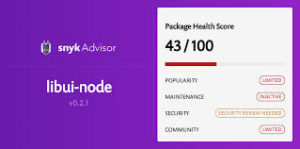
Libui is a portable, lightweight GUI package that enables you to create multiplatform GUI and is particularly well-suited for creating small apps. With the help of this library, programmers can create cross-platform applications using a single codebase. This project places a lot of emphasis on optimization. On devices with low CPU power or memory needs, Libui is designed for optimal performance and minimal CPU utilisation. Without losing too much speed in areas of high demand, such as touch input/output, animation frame rate, application size, etc., all of its functions are easily available through an understandable API.
Numerous APIs or graphic engines are supported. You can construct your GUI using your preferred API of choice and then compile it to platform-specific file types like SWT, JUCE, GLEW, SDL2/GLESv2, etc. The API’s configuration is very easy to use and developer friendly. Without doing any extra effort, you can simply alter the look and behaviour of your applications. By just connecting on the skin name in the skin management dialogue box, you can easily add, remove, or switch between the skins depending on your needs.
11. WompMobile
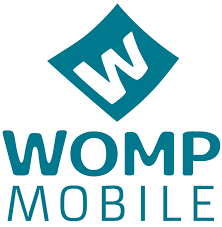
WompMobile provides two types of services: first, it develops new mobile applications, and second, it turns websites into mobile applications. It is the greatest method for website owners who want to convert their websites into mobile applications and are excited about effective, brand-consistent design, increasing mobile traffic, and much more at very reasonable pricing. This is another pygobject alternative.
WompMobile has all the bases covered for transforming a desktop-based website to mobile-friendly accelerated mobile pages or applications based on results-driven solutions. This technology can be used to mobilise anything that exists online.
It offers a substantial amount of mobile experience, ranging from a straightforward website and intranet to an enterprise asset management system. Start utilising WompMobile to learn how to obtain accelerated mobile pages rapidly and what the best strategies are for raising conversion rates.
12. OutSystems
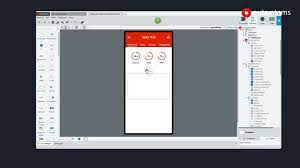
OutSystems is a platform for visually designing apps that requires little to no coding, linking the development system with your current app development framework, and adding your own code. It provides a unified platform for developers and businesses to swiftly create enterprise-grade applications and accelerate the transformation of their app-based operations.
This mobile app development platform is distinctive in that it combines the strength of low code development with cutting-edge mobile capabilities, facilitating the development of visual apps and swiftly integrating the entire development process with the current system.
Its unbeatable speed, integration with everything, great user experience by default, low code without any restrictions, integrated security system, massive scalability, indestructible deployment, and ultimately getting metrics that matter are some reasons to use this forum for developing your next applications.
13. Oracle Mobile Application
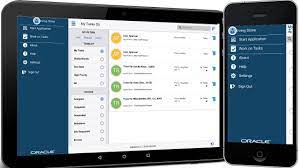
Oracle Mobile Application Framework, also known as Oracle Mobile Application development platform, is a hybrid mobile framework that enables the quick creation of single-source apps that run on a variety of platforms and gadgets. Oracle Mobile Application offers a platform with the most advanced app development tools and a security system to safeguard your work, whether you’re searching for a platform to create a new mobile app or extend an existing one.
This is another pygobject alternative. Its app-building engine is used to create apps for the Windows Platform, iOS, and Android platforms. To provide the whole app construction solution with the declarative user interface, the device features integration, and integrated security, it strongly relies on a number of other mobile app tools and frameworks like HTML5, Java, and JavaScript.
This platform stands out because it promotes code reuse, provides a visual and declarative development environment, and speeds up the creation of mobile apps. As this tool supports a code reuse approach, producing apps for different platforms only requires one code.
14. Mendix
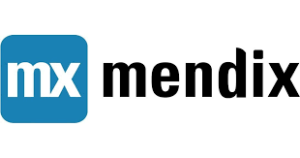
A tool for accelerating digital transition is Mendix. Brands utilise it as one of the quickest, simplest, and easiest app platforms to develop and deploy mobile and web applications. Because it allows users to accomplish an extraordinary time of value, exceeds user expectations, works without endangering the company, and provides fresh perspectives on intelligent applications, it prides itself on being distinct from its rivals.
With agile project management development approaches, visual modelling tools, reusable components, and more, use Mendix to hasten the construction of applications. It is one of the select few app development platforms designed for efficiency, teamwork, and greater control. Also check Parrot OS alternatives
One of the main benefits of utilising Mendix is that it enables new developers to begin creating applications without knowing how to code. They will find the development process to be simple because there are straightforward visual development tools available. The creation of effective and responsive apps for any device is simple.
15. AppGyver
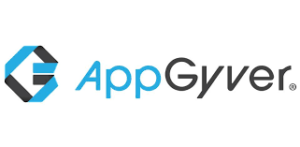
A platform for high performance and cross-platform apps for all devices and platforms is created by AppGyver, a low code visual builder. It enables the creation of webpages as well as apps for Android and iOS. You can create applications that are graphically enhanced and support HTML 5. This is another pygobject alternative.
It aspires to act as a full-stack, enterprise-grade platform for mobile applications that can support frontend, backend, and middleware. Simply bring your concept to the blank canvas, and AppGyver will take care of the rest.
You may design your user interface (UI) using libraries of drag and drop components thanks to this tool’s simple and sophisticated drag and drop editor. You have the choice of starting your project from scratch or from an already-started project. You can install additional and more modules if you wish to add more intricate elements to your work.

